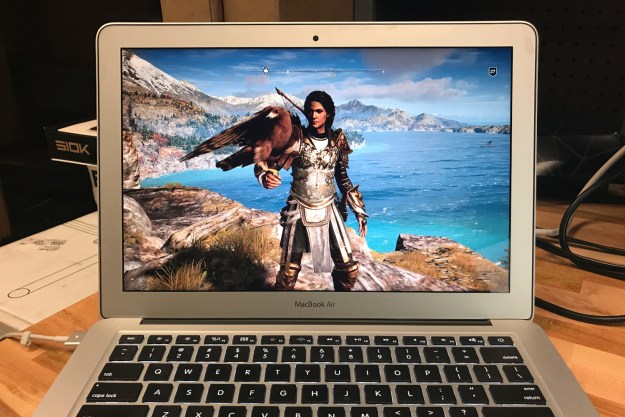If you believed the rumors and reports, all things pointed toward Nvidia launching multiple lines of new graphics cards later this March. In particular, we were expecting these new GPUs to show up at either the GTC (Graphics Technology Conference) or GDC (Game Developers Conference).
Tom’s Hardware, though, has jumped in with word from “multiple independent sources” who say that while Nvidia might serve up an “appetizer” regarding a new generation of consumer GPUs, there’s very little likelihood that any specifics will be announced. Instead, Nvidia will continue to focus on its enterprise products and leave the consumer side for a later introduction. As Tom’s Hardware suggests, new consumer cards based on the Turing architecture might not start production until the middle of June 2018, with graphics cards arriving to consumers in August coinciding with an introduction at Gamescom.
Nvidia introduced its next-generation “Volta” graphics chip architecture in May 2017, which first appeared in the GV100 chip firmly inserted into Nvidia’s Tesla V100 graphics card targeting data centers. While that specific GPU won’t appear in gaming products, unnamed sources had suggested that Nvidia would introduce new graphics cards for the gaming market — several possibly code-named “Turing” — during GTC on March 26. Now more recent information has surfaced that puts a damper on that speculation.
The Turing news is confusing in general given rumors about “Ampere” surfacing last week. According to some, Ampere was supposedly locked and loaded to replace Nvidia’s current Pascal-based GeForce GTX 10 Series graphics cards starting with the GV104 chip serving as the new high-end solution. Cards based on this specific chip were expected to go retail on April 12, falling in line with reports that Nvidia would introduce a new family of gaming products at GTC.
All of that said, the GV104 will supposedly power the GeForce GTX 2080 and 2070. Meanwhile, the GV102 could address the high-end enthusiast market such as the next Titan-branded card and GTX 2080 Ti. The GV106 could target mid-range solutions while the GV107 and GV108 serve budget-oriented customers. But that leaves two questions: What about Volta and what’s up with Turing?
The Turing code name stems from a Reuters article covering Nvidia’s quarterly results conference call with analysts and the press last week. The article focuses on Nvidia’s struggle to keep graphics cards in stock for gamers, as cryptocurrency miners are driving up prices by depleting supplies. Chief Financial Officer Colette Kress said gaming GPUs are at a historical low.
That leads us to the three code names: Volta, Ampere, and Turing. What we do know is that Nvidia’s new Volta architecture resides in the Tesla V100 graphics card. We also know that Nvidia typically doesn’t create different architectures for different markets. If anything, Nvidia creates one generational architecture and produces a handful of different, tweaked chips based on that design for multiple markets.
Everything going forward most likely is still Volta. But the Ampere and Turing code names may be used to describe cards for two different markets given the new landscape: Gaming and cryptocurrency mining. Previous rumors pointed to Ampere code-named gaming cards while Turing likely references to cryptocurrency mining cards. Those names may be reversed too, but highly unlikely.
Why? The Turing code name stems from Alan Turing, an English computer scientist, theoretical biologist, mathematician, and cryptanalyst. The use of his name for a class of add-in GPU cards dedicated to cryptocurrency mining makes sense given his work on cryptography. He helped crack coded messages sent by the Nazis, contributing to the Allies winning World War II.
Given gaming-focused add-in cards are at an all-time low, this Volta-based three-tier scenario is likely what Nvidia plans to discuss in March. There is also speculation that Nvidia scrapped the Ampere code name altogether because it’s used by an ARM-based server maker of the same name. This wouldn’t matter given Volta is still the underlying GPU architecture while the Ampere and Turing names merely distinguish two mainstream-focused audiences.
Updated on March 1 to include a new source indicating that the new cards won’t be launched at GTC or GDC this month.
Editors' Recommendations
- Nvidia just made GeForce Now so much better
- Microsoft pledges to bring Xbox PC games to Nvidia GeForce Now
- Nvidia at CES 2023: RTX 4090 mobile, 4070 Ti, GeForce Now updates
- The best games to show off Nvidia’s GeForce RTX 4090
- A Plague Tale: Requiem heading to GeForce Now with ray tracing



